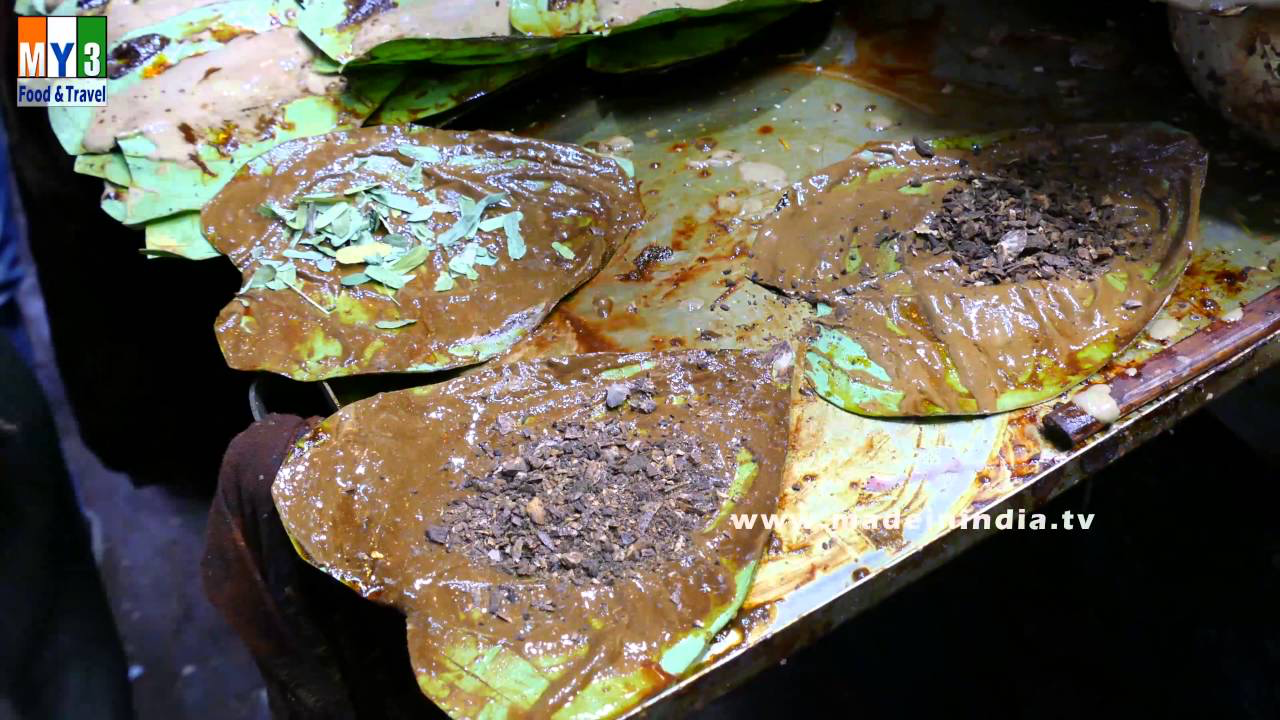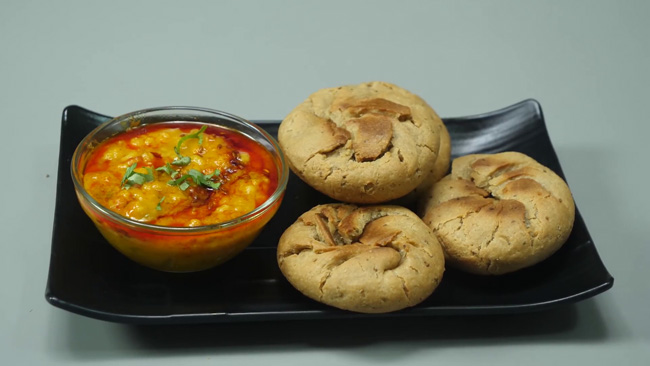Contents
- Traditional and Modern Eating Practices
- Vegetarianism and Dietary Restrictions Across Communities
- Meals of the Day
- How Spicy is the Food?
- Local Produce
- Pickles
- Baby Foods and Tiffin Boxes
- Festival and Seasonal Delicacies
- Summer Delights
- Wedding Food
- Prasad and Bhandara
- Smoking, Drinking and Substance Use
- Local Culinary Traditions
- Rodge or Rodga
- Patalroti
- Travelled Culinary Traditions
- Salai
- Eating Out
AKOLA
Food
Last updated on 28 July 2025. Help us improve the information on this page by clicking on suggest edits or writing to us.
Akola, located in the Amravati division of Maharashtra, has a food culture that reflects a mix of rice and wheat diets. A strong preference for spicy food, pickles form a beloved part of Akola’s dietary preferences. The unique combination of spicy, rice, and wheat-based dishes, along with the variety of flavorful pickles, defines the distinctive culinary identity of Akola.
Traditional and Modern Eating Practices
The staple diet of the Akola district has evolved from being primarily millet-based to incorporating more wheat and rice. Traditionally, people consumed a protein-rich diet centered around millets, but over time, wheat and rice have become more prominent in the local cuisine. Akola residents now consider both wheat and rice as staple foods, with wheat's importance diminishing slightly due to the increased consumption of rice.
In the past, people in Akola practised storing dehydrated vegetables and meat for the summer months when food sources were scarce. To utilize these preserved foods, they would rehydrate the ingredients by adding water and then cooking them into meals. This technique allowed for the storage of food resources during times of abundance to ensure food security during periods of scarcity.
Vegetarianism and Dietary Restrictions Across Communities
In Akola district, vegetarianism and dietary restrictions are deeply rooted in the local communities. The majority of Hindus in Akola, especially women, adhere to a vegetarian diet. Beyond Hinduism, other religious communities in Akola also observe dietary restrictions. For instance, Jains, a small but influential religious minority in the district, follow an even more stringent form of vegetarianism, avoiding not just meat but also certain vegetables and fermented foods.
Meals of the Day
Breakfast is an important meal in Akola. Common breakfast items include Poha, Upma, Idli, Dosa, and Vada. Tea or coffee is also commonly consumed during breakfast. Lunch is the main meal of the day in Akola. A typical lunch spread may include rice, dal, bhaji, roti, curd, papad, and pickle. Dinner is usually a lighter meal compared to lunch, with common items including roti, bhaji, dal, rice, and salad. It is also common for people in Akola to take a tea or coffee break between lunch and dinner. This provides a chance to socialize and recharge before the evening meal.

An interesting cultural practice in Akola is the consumption of post-meal digestives. These include Paan (betel leaf with areca nut, lime, and other spices), Masala Paan (paan with added spices and flavourings), Kapoori Paan (paan with a crispy fried coating), Light Patti Paan (a lighter version of paan), Light Kapoori Paan (a lighter version of kapoori paan), and Kimam Jafarabadi (scented tobacco).
How Spicy is the Food?
People from Akola prefer extremely spicy food. The taste of very spicy food is something that each and every person from the district craves for in their meals.
Local Produce
Traditionally, Akola was a major manufacturer and exporter of raw cotton and cotton textile products. The district was also known for its production of jowar, an edible grain. However, in recent times, soybeans have now become a more prominent crop, replacing cotton as the leading agricultural product in the district. Despite this change, pulses continue to be an important crop that is still cultivated in Akola.
Pickles
People of Akola have a fondness for pickles. In the households of the district, one can find many varieties of pickles such as Mango pickle, Lemon pickle, Chili pickle, Carrot pickle, etc. Bhokar, also known as Lasuda or Gonda, is a rare tropical fruit that comes in the market only in the months of May and June. It is worth mentioning that pickles made out of Bhokare are beloved by many in the district.

Baby Foods and Tiffin Boxes
The first foods given to infants in the district are typically soft dalia (porridge made from broken wheat) or dal and rice water. These foods are easily digestible and provide essential nutrients for the infant's growth and development. For school-going children, the tiffin boxes usually contain items such as roti, bhaji (like potato, cauliflower, lady's finger (okra), etc.), and rice. These foods provide a balanced and nutritious meal for children during the school day.
Festival and Seasonal Delicacies
Summer Delights
During summer, various types of delicacies are prepared from seasonal fruits such as mangoes. Patur is particularly known for its abundance of mangoes and other unique seasonal tropical fruits and vegetables during the summer months. Some of the rare varieties found in the region include Khirnis, Tembhurni, Hanuman fal, Ram fal, Sita fal, and Chara. These fruits and vegetables are often used by the local population to prepare delicious seasonal delicacies.

Khirnis is a small, round fruit with thin, green skin and sweet, juicy flesh. It is often used in chutneys and pickles. Tembhurni is a sour, green fruit that resembles a small mango and is commonly used in curries and dals. Meanwhile, Hanuman fal is a small, oval-shaped fruit with rough, brown skin and sweet, creamy flesh, named after the Devta Hanuman. Ram fal is a large, round fruit with thick, green skin and sweet, fibrous flesh, named after the Devta Ram. Sita fal is a small, heart-shaped fruit with thin, yellow skin and sweet, juicy flesh, named after the Devi Sita. Chara is a small, round fruit with thin, green skin and sour, tangy flesh, often used in chutneys and pickles.
Wedding Food
Weddings in Akola mostly feature a simple traditional menu. One can expect items such as dal, roti, rice, sabjis, along with some mithai like boondi, ladoo, jalebi, gulab jamun, etc.
Prasad and Bhandara

Akola is known for being home to various historical mandirs, many of which are constructed in the Hemadpanthi architectural style. This style originated in the 12th-13th century and is characterized by its distinctive features, including intricate carvings, designs, and the use of local stone materials. Akola has a number of mandirs built in the Hemadpanthi style, which often serve traditional delicacies to visitors, such as Shira (sooji halwa), a sweet semolina-based pudding, and sugar candies coated with sesame and chiranji (edible seeds).
Smoking, Drinking and Substance Use
The alcohol consumption in the district is excessively high. A local variety of alcohol, colloquially known as desi daaru, is made with the help of Mahua flowers and gud (jaggery). To make this, the Mahua flowers and gud (jaggery) are first mixed together. Then, the mixture is fermented for a month, after which it is distilled. The resulting precipitate that is obtained becomes the local variety of alcohol, known as desi daaru. This traditional method of producing local alcohol has contributed to the high alcohol consumption in the district. The availability and accessibility of this potent local brew have led to concerning levels of alcohol abuse and related social issues in the community.
Local Culinary Traditions
Apart from the common food items like rice, chapati, and dal, some dishes that are distinct to the local cuisine of Akola include Rodge and Patalroti.
Rodge or Rodga

Rodge or Rodga is a traditional staple food item commonly consumed as part of a typical feast on Akola farms. It is a type of roti-ball made from a dough of wheat and maize flour. To add flavor, the dough is seasoned with spices such as ajwain, sesame seeds, cumin, salt, and turmeric.
The preparation of rodge involves several methods. The most common way is to roast the roti balls over cow dung cakes. Alternatively, they can be steamed or boiled in water and then fried, resulting in variations known as Bitti and Panges, respectively. The texture of the Rodge can range from tough to soft, depending on the specific preparation method used. Roasting over cow dung cakes typically produces a tougher, more dense roti-ball, while steaming or frying results in a softer, more pliable texture.
Patalroti
Patalroti is a specialized version of chapati made by using different quality wheat known as lokwan and then baking it in a pot. Lokwan wheat is a variety of durum wheat that is known for its high gluten content and is commonly used in making pasta and couscous. To make patalroti, the lokwan wheat flour is mixed with water and kneaded into a dough. The dough is then divided into small balls and rolled out into thin, round discs. These discs are then placed on a pot or tawa and cooked on both sides until they are lightly browned and puffed up.
Patalroti is a popular snack in parts of Maharashtra and is often served with various chutneys, pickles, or curries. It is known for its thin, crispy texture and distinctive flavor that comes from the use of lokwan wheat.
Travelled Culinary Traditions
Salai

The Banjara community in the district makes a dish called Salai from goat blood. To prepare Salai, Banjaras use fresh goat blood as the main ingredient. They mix it with jowar (sorghum) flour, which acts as a thickening agent, giving the dish a distinctive texture. The use of jowar flour is particularly significant as it is a staple crop in the region and has been a part of the local diet for centuries. They use jowar flour to thicken the dish. Due to nomadic herding, the dish has come from unknown whereabouts in this district.
Eating Out
The culture of eating out in the streets, restaurants, or cafes is not as common or famous in Akola as it is in other cities. Whenever there is a special occasion or program, it is customary for most people to make various kinds of dishes at home. However, it is worth noting that because this practice increases domestic workload, people now prefer to eat outside more often. Although older people usually resist this type of change, sometimes they agree to go along.
Some of the common places to eat outside in Akola include Khau Galli and Chaupati, which offer various kinds of chaats and other Indian cuisines. These street food hubs are popular among the locals and visitors alike. Apart from the street food culture, Akola also boasts of some legacy restaurants such as Hotel Ranjit, Hotel Rising Sun, Hotel Mirchi, etc., each of which offers its own special dishes. These restaurants have been serving the community for generations and are known for their authentic flavours and quality ingredients.
Last updated on 28 July 2025. Help us improve the information on this page by clicking on suggest edits or writing to us.